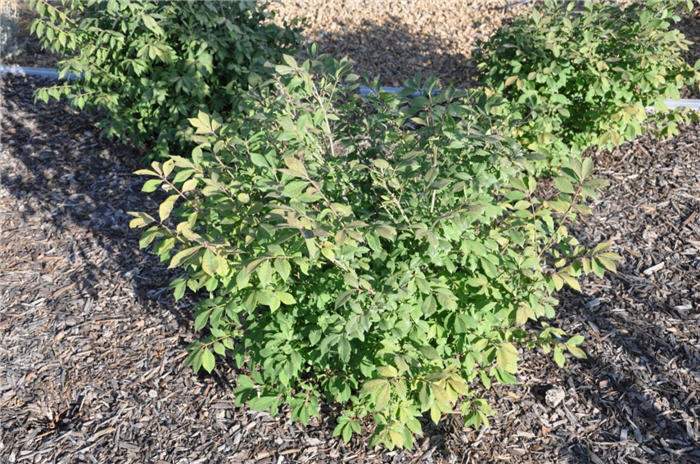| Botanical Name: Euonymus alatus 'Compacta' | |
| Common Name: Compact Burning Bush |

-
Anatomy
-
Culture
-
Design
Plant Type
Shrub
Height Range
6-12'
Flower Color
Yellow
Flower Season
Spring
Leaf Color
Green, Dark Green, Red
Bark Color
Brown, Green
Fruit Color
Red
Fruit Season
Fall
Sun
Full, Half
Water
Medium, Extra in Summer
Growth Rate
Moderate, Slow
Soil Type
Sandy, Clay, Loam, Rocky, Unparticular
Soil Condition
Average, Rich, Poor, Well-drained
Soil pH
Acid, Neutral, Basic
Adverse Factors
n/a
Design Styles
English Cottage, Formal, Ranch
Accenting Features
Fall Color
Seasonal Interest
Spring, Summer, Fall
Location Uses
Background, Shrub Border, Foundation, Walls / Fences
Special Uses
Hedge, Screen, Small Spaces
Attracts Wildlife
n/a
Information by: Stephanie Duer
Photographer: Connon Nursery
Photographer: Connon Nursery
-
Description
-
Notes
"Compacta" is a dwarf form of burning bush, growing 6 to 8 feet tall and wide. Like the speices, leaves emerge in the spring a bright, luminous green, mature to a dullish medium to dark green, and turn a brilliant scarlet to burgundy in the fall. After the leaves drop, the interesting wood is exposed, with corky "wings" along the length of the stems. New wood displays green and brown wood, older wood is a warm grey brown. Little yellow flowers appear May and June, and though not showy, they are charming.
Grow in full sun to part shade (though fall color may be less intense). Not particular to soil type, and not very drought tolerant. Benefits from regular summer watering. combines well with spirea, weigelea, and purple-leaf sand cherries. Avoid shearing as it makes this dense, twiggy shrub even woodier; prune selectively to control size or shape (see Guides). Avoid planting directly against a west or south facing wall...the heat will fry the poor thing.